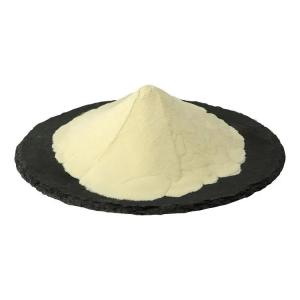News list
News Center
Hot Product
News
Phosphoric acid as a research focus in healthy eating
Time:2025-10-28
Phosphorus is a fundamental mineral, essential for life. It plays a critical role in building strong bones and teeth, forming cell membranes, and creating DNA and RNA. It's also a key component of adenosine triphosphate (ATP), the molecule that fuels our cellular energy. While phosphorus is naturally abundant in many wholesome foods like dairy, meat, fish, poultry, nuts, and legumes, a specific form of this mineral – phosphoric acid – has become a significant focus in nutritional research, particularly concerning its impact on overall health and healthy eating patterns.
Phosphoric Acid: From Natural Occurrence to Food Additive
Phosphoric acid (H₃PO₄) is a form of phosphorus that occurs naturally in small amounts in some foods. However, its prominence in modern diets stems primarily from its use as a food additive. Its sharp, tangy taste and ability to act as a preservative and pH stabilizer make it a popular ingredient, most notably in carbonated colas. It provides the characteristic "bite" associated with these beverages. Beyond sodas, phosphoric acid or other phosphate additives can be found in processed meats, baked goods, instant foods, and even some dairy products, often used to enhance flavor, improve texture, or extend shelf life.
The Research Focus: Unpacking the Health Concerns
The primary reason phosphoric acid has become a research focus in healthy eating is the growing body of evidence linking high intake of added phosphates, particularly from processed foods and beverages, to potential health risks:
Bone Health Paradox: While phosphorus is vital for bones, an imbalance with calcium can be detrimental. Research suggests that excessive phosphoric acid intake, especially when calcium intake is low, may disrupt the body's calcium-phosphorus balance. This imbalance can potentially trigger the release of parathyroid hormone, leading to calcium being leached from bones over time, weakening them and increasing the risk of osteoporosis.
Cardiovascular Health: Studies have indicated a correlation between high dietary phosphate intake and adverse cardiovascular outcomes. Elevated phosphate levels, even within the normal range, have been associated with vascular calcification (hardening of the arteries), increased blood pressure, and a higher risk of heart disease and stroke.
Kidney Function: The kidneys are responsible for filtering excess phosphorus from the blood. For individuals with compromised kidney function, high phosphate intake can be particularly dangerous, leading to hyperphosphatemia, which exacerbates kidney damage and increases cardiovascular risks. Research is increasingly looking at whether high phosphate loads might also strain healthy kidneys over the long term.
Metabolic Health: Emerging research is exploring potential links between high phosphate consumption and metabolic syndrome, insulin resistance, and type 2 diabetes, although the mechanisms are still being investigated.
Healthy Eating in the Age of Phosphoric Acid: Practical Guidance
Given these research findings, navigating a healthy diet requires awareness of phosphoric acid sources:
Read Labels: Be vigilant about ingredient lists. Look for "phosphoric acid," "phosphate," "dicalcium phosphate," "trisodium phosphate," and other phosphate-containing additives.
Limit Sugary Sodas: The most significant source of phosphoric acid for many people is cola drinks. Reducing or eliminating these beverages is the single most effective step to lower phosphoric acid intake.
Prioritize Whole, Unprocessed Foods: Focus on a diet rich in fruits, vegetables, whole grains, lean proteins, and healthy fats. These foods contain naturally occurring phosphorus in balanced proportions with other essential nutrients, including calcium.
Choose Water and Healthier Alternatives: Opt for water, unsweetened tea, or sparkling water without added phosphates instead of cola.
Balance Calcium and Phosphorus: Ensure adequate calcium intake through dairy, leafy greens, or fortified foods to help maintain a healthy mineral balance.
Conclusion: A Call for Mindful Consumption
Phosphoric acid itself is not inherently "bad," but its prevalence in processed foods and sugary drinks represents a shift towards a dietary pattern that research increasingly associates with negative health outcomes. As a research focus, phosphoric acid highlights the importance of looking beyond single nutrients and considering the source, form, and overall dietary context. Healthy eating in the modern world means being mindful of hidden additives like phosphoric acid and making conscious choices to favor whole, minimally processed foods to support long-term health and well-being.
Phosphoric Acid: From Natural Occurrence to Food Additive
Phosphoric acid (H₃PO₄) is a form of phosphorus that occurs naturally in small amounts in some foods. However, its prominence in modern diets stems primarily from its use as a food additive. Its sharp, tangy taste and ability to act as a preservative and pH stabilizer make it a popular ingredient, most notably in carbonated colas. It provides the characteristic "bite" associated with these beverages. Beyond sodas, phosphoric acid or other phosphate additives can be found in processed meats, baked goods, instant foods, and even some dairy products, often used to enhance flavor, improve texture, or extend shelf life.
The Research Focus: Unpacking the Health Concerns
The primary reason phosphoric acid has become a research focus in healthy eating is the growing body of evidence linking high intake of added phosphates, particularly from processed foods and beverages, to potential health risks:
Bone Health Paradox: While phosphorus is vital for bones, an imbalance with calcium can be detrimental. Research suggests that excessive phosphoric acid intake, especially when calcium intake is low, may disrupt the body's calcium-phosphorus balance. This imbalance can potentially trigger the release of parathyroid hormone, leading to calcium being leached from bones over time, weakening them and increasing the risk of osteoporosis.
Cardiovascular Health: Studies have indicated a correlation between high dietary phosphate intake and adverse cardiovascular outcomes. Elevated phosphate levels, even within the normal range, have been associated with vascular calcification (hardening of the arteries), increased blood pressure, and a higher risk of heart disease and stroke.
Kidney Function: The kidneys are responsible for filtering excess phosphorus from the blood. For individuals with compromised kidney function, high phosphate intake can be particularly dangerous, leading to hyperphosphatemia, which exacerbates kidney damage and increases cardiovascular risks. Research is increasingly looking at whether high phosphate loads might also strain healthy kidneys over the long term.
Metabolic Health: Emerging research is exploring potential links between high phosphate consumption and metabolic syndrome, insulin resistance, and type 2 diabetes, although the mechanisms are still being investigated.
Healthy Eating in the Age of Phosphoric Acid: Practical Guidance
Given these research findings, navigating a healthy diet requires awareness of phosphoric acid sources:
Read Labels: Be vigilant about ingredient lists. Look for "phosphoric acid," "phosphate," "dicalcium phosphate," "trisodium phosphate," and other phosphate-containing additives.
Limit Sugary Sodas: The most significant source of phosphoric acid for many people is cola drinks. Reducing or eliminating these beverages is the single most effective step to lower phosphoric acid intake.
Prioritize Whole, Unprocessed Foods: Focus on a diet rich in fruits, vegetables, whole grains, lean proteins, and healthy fats. These foods contain naturally occurring phosphorus in balanced proportions with other essential nutrients, including calcium.
Choose Water and Healthier Alternatives: Opt for water, unsweetened tea, or sparkling water without added phosphates instead of cola.
Balance Calcium and Phosphorus: Ensure adequate calcium intake through dairy, leafy greens, or fortified foods to help maintain a healthy mineral balance.
Conclusion: A Call for Mindful Consumption
Phosphoric acid itself is not inherently "bad," but its prevalence in processed foods and sugary drinks represents a shift towards a dietary pattern that research increasingly associates with negative health outcomes. As a research focus, phosphoric acid highlights the importance of looking beyond single nutrients and considering the source, form, and overall dietary context. Healthy eating in the modern world means being mindful of hidden additives like phosphoric acid and making conscious choices to favor whole, minimally processed foods to support long-term health and well-being.


 CN
CN





